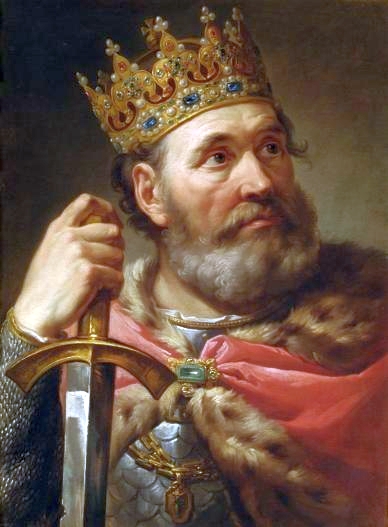The period of Boleslaus the Brave’s rule (992-1025) in Poland was a time of wars and expansion of the country’s territory. This was experienced by the Germans, who suffered a major defeat in the Battle of Budziszyn.
Prince Boleslaus the Brave, reigning in Poland since 992 and coronated as the first king of Poland in 1025, initially maintained good relations with his western neighbour, the Holy Roman Empire of the German Nation, or Germany. It culminated in a congress in Gniezno in 1000, where he hosted the German emperor, Otto III.
Changing moods
Relations with its western neighbour changed, however, after the emperor’s death in 1002. The Polish ruler then decided to take advantage of the chaos prevailing in the Germans and attacked them militarily. He seized the March of Meissen, Milsko and Lusatia. He then reached out to Bohemia and Moravia, expanding the territory of his state. He thus began a long period of wars with Germany, ruled by Henry II (emperor from 1014). These battles, interwoven with truces, did not bring lasting peace.
He outsmarted the Germans
In 1015. Henry II, aided by Bohemians, Saxons and pagan Velets, struck at Boleslaus the Brave. The German army, divided into three parts, entered Polish territory by different routes. Henry II waited for the rest of the army to join forces and crush the Polish troops. However, the Brave knew the enemy’s movements and crossed the road with the Saxons, who were forced to retreat. The Germans realised that joining forces was no longer possible and they were in danger of being encircled in hostile, unknown territory. They therefore began a retreat.
This was exploited by Boleslaus, who struck at the rear of the imperial army on 1 September 1015 at Bautzen. Despite their excellent commanders, the Germans suffered a huge defeat. The precise location of the battle is not known. It is known that it took place somewhere on the road between Budziszyn and Krosno Odrzańskie. Looking for its more precise location, historians propose the probable places: Zielona Góra, Lubiechów, Brzeźnica, Ochla.
Eventually, the Polish-German wars ended with the peace concluded in Bautzen in 1018. The Polish ruler managed to keep Milsko and Lusatia for himself.





